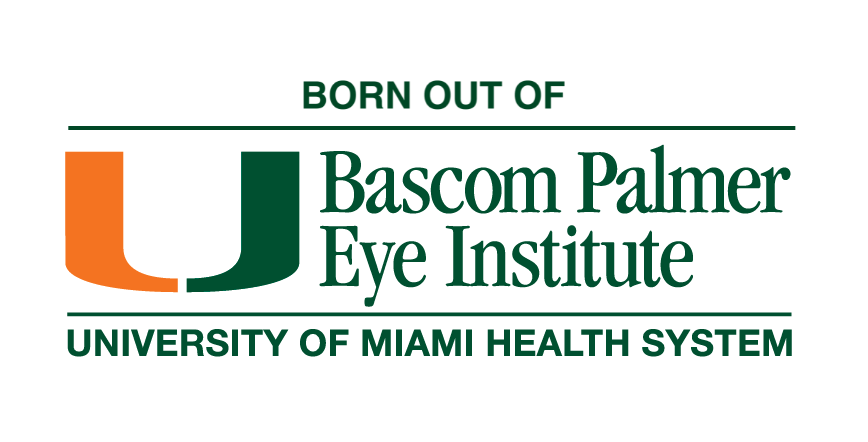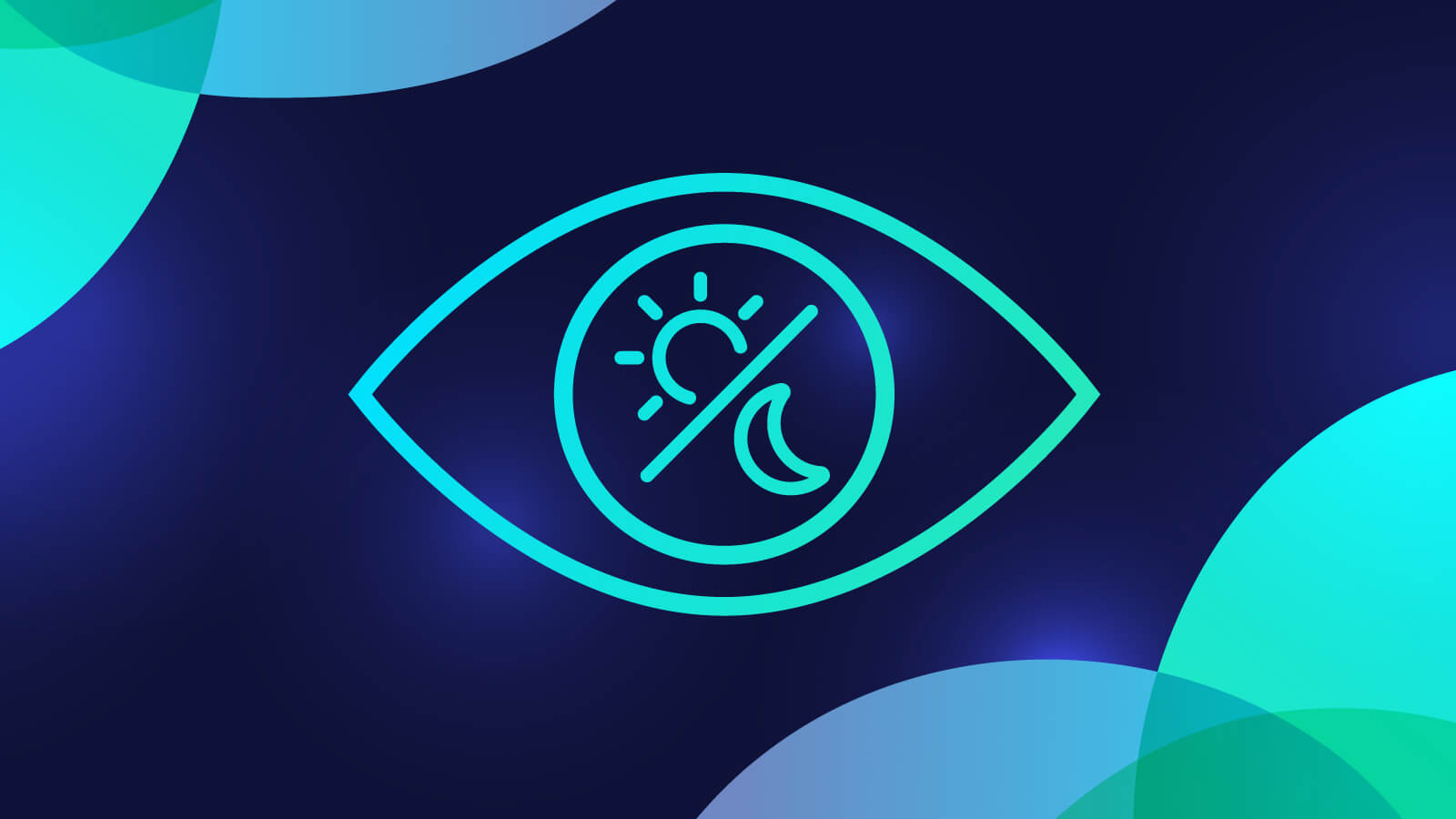By Greg Caldwell, OD, FAAO
196 million people worldwide are impacted by age-related macular degeneration (AMD), with as many as 11 million people impacted in the U.S. alone. By 2050, that number is expected to double to nearly 22 million in the U.S.1 Age-related macular degeneration (AMD), the progressive eye disease that affects central vision, is the leading cause of vision loss2 among older Americans. Patients often have no symptoms in the early stages of the disease, and little can be done to treat AMD in later stages, which makes early detection vital to preserving the vision of your patients.
In years past it was widely thought that AMD was a disease that affected patients in their 60s. It’s clear now, though, that AMD can be detected at much younger ages and in the early stages—and failing to screen for it means we’re missing an opportunity to help patients slow down or halt the progression of this insidious disease.
One tool at our disposal for early detecting of AMD is dark adaptation (CPT 92284), which looks at a patient’s dark adaptation index values. Recent technological advancements in dark adaptation testing make it much easier to provide early detection and to quantify dark adaptation function.
The ideal candidates for dark adaptation testing may be broader than you’re imagining.
While it may make sense to screen all patients over age 50, some segments are prime prospects for dark adaptation testing, including:
- Patients who are having difficulty seeing in low lighting
- Patients who are having difficulty driving at night
- Patients in their 50s, even those without symptoms, who have a family history of AMD
- Patients who have already been diagnosed with AMD, since this new testing can help quantify dark adaptation function to monitor disease progression.
While it’s easy to see dark adaptation testing’s value for early detection, it can be easy to overlook its importance as a quantitative tool.
It may be helpful to consider a parallel to glaucoma testing, which has both functional testing (visual field) and structural testing (OCT ganglion cell complex and nerve fiber layer). For macular degeneration, there are several structural test options: OCT, OCT angiography, and fluorescein angiography, but there really wasn’t a functional test, until now.
The long-established macular photostress test, for example, performed using a pen light, provides some useful qualitativeinformation, but lacks a functional quantitative component.
The rapid and extended dark adaptation exams not only provide qualitative testing but also fill in the gaps with crucial functional testing. The test is currently available using Heru’s wearable platform. Heru provides a 4.5-minute rapid test, which can be used to screen for macular degeneration quickly and easily, and an extended 20-minute test. If the patient fails the rapid test, the more sensitive extended test will provide a quantitative number that can be used to establish a baseline and monitor disease progression.
Co-managing care with Primary Care Physicians is key.
Macular degeneration can result from systemic diseases that place oxidative stress on the body, such as cardiovascular disease, diabetes, and obesity. This provides you with an opportunity to coordinate care by coaching Primary Care Physicians on the ways patients can manage the disease through lifestyle modifications, such as:
• Smoking cessation
• Mediterranean diet/diet that features fruits and vegetables
• Increased exercise – sedentary patients can benefit from as little as 10-20 minutes of walking per day
The role of vitamin supplements in AMD.
Research has shown that patients with certain forms of age-related macular degeneration (AMD) may benefit from taking nutritional supplements as they may help slow disease progression3.
The AREDS 2 (Age-Related Eye Disease Study 2) was a large research study. The study looked at patients taking vitamins and minerals daily for AMD. This study found that certain nutritional supplements may aid patients with a significant amount of drusen (intermediate and advanced AMD). These supplements may lower the risk of wet AMD and vision loss in the second eye of people who lost vision in one eye from AMD. Taking the following nutritional supplements every day may help these people lower their risk of getting late-stage or wet AMD:
- Vitamin C (ascorbic acid) 500 mg
- Vitamin E 400 international units (IU)
- Lutein 10 mg
- Zeaxanthin 2 mg
- Zinc (as zinc oxide) 80 mg
- Copper (as cupric oxide) 2 mg
When recommending vitamin supplements, it is important to remember that as the Daily Value percentage of some ingredients—zinc in particular—is so high that it can be harmful to patients, as reported in a 2016 warning issued by the Macular Degeneration Association4.
Dark adaptation testing benefits your practice as well as your patients.
Performing dark adaptation testing can set you apart as a forward-thinking practice and lets your patients know you’re dedicated to using advanced diagnostic technology to protect their vision.
In addition, it provides your practice with both tangible and intangible benefits. For patients with borderline dark adaptation, closer follow-up enables you to monitor and manage the disease progression. Closer follow-up also expands opportunities for repeat office visits and may include other billable testing such as OCT or fundus. Dark adaptation is billable to insurance with a national reimbursement average of $60.02 and is co-billable with visual fields, OCT, fundus imaging, and/or office visits.
On the retail side, you have the opportunity to offer retinal light protection through glasses with no-glare or blue light protection and sunglasses, along with vitamin supplements, where indicated.
While ROI is, of course, never our first concern when adding new technology to our practices, the reality is we must remain profitable to continue to care for our patient’s eyes. I believe that financial benefits are a natural outcome of doing the right things for our patients while ensuring peace of mind that we’re doing everything we can to protect our patient’s vision.
Learn more about Heru’s new dark adaptation exam.
Greg Caldwell, O.D., F.A.A.O., practices integrative optometry with a focus on the diagnosis and management of anterior and posterior segment ocular disease. He has integrated nutrition, prevention, and wellness into his patient care.
Dr. Caldwell is co-founder of Optometric Education Consultants and has lectured extensively throughout the U.S. and in more than thirteen countries. He is past President of the Pennsylvania Optometric Association, served on the AOA Board of Trustees, and is President of the Blair/Clearfield Association for the Blind.
1. Age-Related Macular Degeneration: Facts & Figures | BrightFocus Foundation
2. https://www.nei.nih.gov/learn-about-eye-health/eye-conditions-and-diseases/age-related-macular-degeneration
3. Vitamins for AMD – American Academy of Ophthalmology (aao.org)
4. Macular Degeneration Association. (2016, March 7). Eye Association Issues Urgent Supplement Warning [Press release]. https://www.prweb.com/releases/2016/03/prweb13251076.htm

